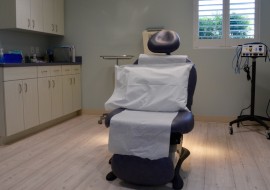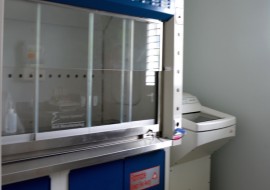The Sun and Skin Cancer
Skin cancers are the most common tumors in the United States, with over one million cases diagnosed each year.
Skin cancers are usually irregular in shape, and extend beyond the visible portion of the tumor. In particular, skin cancers located around the eyes, ears, nose, and lips are often larger, deeper, and more aggressive than on other parts of the body. Since these areas are also cosmetically and functionally important, any surgical treatment has the dual role of removing all of the cancer, while conserving as much of the normal tissue as possible.
The sun is the cause of at least 90% of all skin cancers. Ultraviolet light from the sun damages the DNA, or genetic makeup, of our skin’s cells. In this way, the sun exposure we get early in life affects us forever! In fact, most of your lifetime sun exposure occurs during childhood and teen years.
Two main types of ultraviolet light play a role in sun damage: UVA and UVB. UVA penetrates the skin more deeply, and triggers the freckles and brown spots we see with age; it is released in high concentrations in tanning booths. UVB penetrates only the top layers of the skin and leads to sunburns. Both forms of ultraviolet light contribute to the development of cataracts.
Florida offers significant risk for sun damage because of its proximity to the equator. Sun rays are more intense those in northern climates, and they are further intensified when they bounce off sand, water, and concrete. Cloudy days offer little protection; 70-80% of both UVA and UVB pass through clouds and haze.
Although anyone can develop a skin cancer, people at greatest risk have fair skin, blond or red hair, and blue, green, or gray eyes.
Sunscreen Basics
SPF, or Sun Protection Factor, measures the protection from UVB only, and represents how long a person can be in the sun without burning. There is currently no standard measurement of UVA protection. For best protection from both UVA and UVB, a broad spectrum sunscreen is needed.
Sunscreen: What to Look For
UVA COVERAGE, provided by:
- Benzophenones
- Oxybenzone
- Methyl Anthranilate
- Parsol 1789 (avobenzone)
UVB COVERAGE, provided by:
- PABA (may cause rash)
- Cinnamates
- Salicylates
ALL WAVELENGTH COVERAGE, provided via physical block by:
- Titanium dioxide
Sunscreen coverage for children is different than that for adults. The skin of young children more readily absorbs creams and the chemicals in them. The American Pediatric Association recommends sun avoidance and sun protective clothing for the best protection. Infants less than 6 months old should be kept in shade, while children older than 6 months should use non-alcohol based sunscreens.









